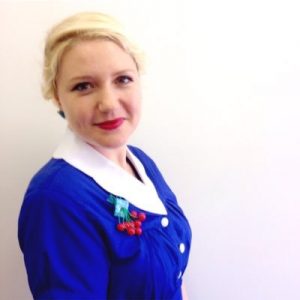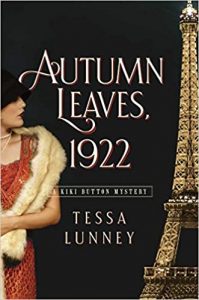Tessa Lunney: My Writing Process
 My writing process
My writing process
In 2018, this site was generous enough to host me talking about my writing practice – you can find that piece here. Rather than repeat myself, I thought I would talk to it, to see what has changed and what has remained fundamentally the same.
My daily routine
In 2018 I wrote:
“I get up as close to 6am as possible, head into my study with my coffee, and before any other distractions, open my laptop and begin writing at the point I left off the day before. I then write until my daughter wakes up, or I have to get ready to go to my part-time job. If I have a writing day (hurray!) then after breakfast I go back to the computer and write until lunchtime. I only keep working after lunch if I’m rewriting or editing. I’m a morning worker, and by midday my creative juices have pretty much dried up. When I’m editing, however, I only break at the end of the day or when I have a headache, as I try to fit the shape of the entire novel in my head.”
That is certainly what I used to do; how lucky I was. I miss it. Now I have two children, and between the two of them I can rarely manage enough time before they wake to write. I have one writing day per week, which is also the day I must relax, exercise, do all life admin and, if at all possible, spend time with my husband. More time constraints have meant one thing: I am more flexible in how and when I write.
I wrote my latest book, Autumn Leaves, 1922, while on parental leave. In Australia in general, and at my workplace in particular, parental leave is generous – I took 11 months off work last year. I began writing when my babe was only a month old, or else I would never have met my (thrice extended) deadline. I wrote whenever I could, morning or afternoon or evening, whenever someone would take the baby away for an hour. If I was very tired, I would put on my silky robe and outrageous party shoes, I ate negroni-flavoured chocolates and played Parisian Chanson music, I put postcards of art and advertising from the 1920s around my workspace, all to get in the mood. Eventually the writing became a habit, once again, and I didn’t need the prompts (except the shoes… and the chocolate).
I was back at work when the edits came in, so I used my one day off a week to edit. I edited from the moment my children left for their day with Babushka until the minute they knocked on the door to return. I begged, always, for more time, and was sometimes granted it.
I made these odd hours work by doing all my thinking in between, mostly while doing household chores. Hanging the laundry, stacking the dishwasher, feeding the youngest to sleep. My phone is full of notes, ideas, things I’ve heard on podcasts, rearranged plotlines. Once or twice I’ve even taken a bit of time to relax, read a book, but have ended up writing something, a short story, a poem, late at night when I think I’m too exhausted to think but, it seems, my brain is still whirring away.
My planning process
Three years ago I said:
“My planning process is somewhat haphazard. I tend to write chronologically, starting at page 1, chapter 1 and working chapter by chapter until the end. When it comes to plot, I often have only the vaguest idea where I want to go. An essential part of my process is to ‘discover’ the story for myself.”
Now this haphazard system is used only for my short fiction pieces. With longer work, like a novel, I don’t want to waste time by ‘thinking’ at the computer. I like to write out a strong plotline with as much detail in it as possible. Then, whenever I get an hour, I can just sit down and begin where I left off the time before. This was the only way I could write the second Kiki Button mystery with a tiny baby who didn’t sleep – I didn’t have to think myself into the fictional space, I just had to drop in for an hour, write what happened, and then leave.
This can only work for two reasons. Firstly, all my thinking is done while I do the endless chores of parenting small children. Secondly, my edits are heavy and go on for months. Still, I find it easier to edit and rewrite than to write the first draft, so this works for me for now.
I still write chronologically though. For some reason, writing out of sequence makes me very confused.
My current struggles
I had a list of struggles in 2018, but now I only have one: I need more time. Even with all my privileges, I still need more time. This problem has no solution, so I just manage as best I can. My work moves too slowly – my ideas are bursting from me – but the children are awake, I have to go to the office, if I don’t exercise I’ll hurt my back lifting the heavy baby (current problem), I have to eat more than toast or I’ll get sick (eternal problem), my clothes are dirty… anyway. Whatever. I write whenever I can.
Research
This is the one point I didn’t address three years ago, but as I write historical fiction, it’s vital to the writing process. Most of my reading is dominated by research – throughout 2020, all I read were histories of 1920s Europe, books set or written in 1920s Europe, or spy novels. I listened to endless podcasts on writers of the 1920s or the First World War or the rise of fascism in interwar Europe.
My research isn’t only to bolster my fictional world. My reading inspires my writing, always. I wrote the first Kiki story because I couldn’t find that book – on 1920s Paris, crime fiction with a literary style, lots of sex and parties and not too much violence – and the second gave me a place to put all the fear from the last two years without having to look at it in the face yet again, to write it slant, to wrap it up so I could carry it around more easily. The research (by which I mean my reading) is always the first step. It continues up until the very last edit and sometimes beyond. It sustains me – I want to be part of the conversation, and I can be, through my writing.
Tessa Lunney is a novelist, short fiction writer, reviewer, and poet. She holds a Doctorate of Creative Arts in Australian war fiction from Western Sydney University. Her debut novel, April in Paris, 1921, received wide praise across the industry, and her short fiction has won awards. In her spare time, she reads, wears vintage, dances lindy hop, and stalks Parisian-style bars for their champagne cocktails. She lives and works on Bidjiagal and Gadigal land in Sydney, Australia. You can read more about Tessa and her work on her website.
AUTUMN LEAVES, 1922
 After a year away from Paris, Kiki Button is delighted to be back in City of Lights. But danger threatens her return as she is pulled into another spy mission—one that brings her ever closer to the rising fascist threat in Europe.
After a year away from Paris, Kiki Button is delighted to be back in City of Lights. But danger threatens her return as she is pulled into another spy mission—one that brings her ever closer to the rising fascist threat in Europe.
October 1922. Kiki Button has had a rough year at home in Australia after her mother’s sudden death. As the leaves turn gold on the Parisian boulevards, Kiki returns to Europe, more desperately in need of Paris and all its liveliness than ever. As soon as she arrives back in Montparnasse, Kiki takes up her life again, drinking with artists at the Café Rotonde, gossiping with her friends, and finding lovers among the enormous expatriate community. Even her summertime lover from the year before, handsome Russian exile Prince Theo Romanov, is waiting for her.
But it’s not all champagne and moonlit trysts. Theo is worried that his brother-in-law is being led astray by political fanatics. Kiki’s boy from home, Tom, is still hiding under a false name. Her friends are in trouble—Maisie has been blackmailed and looks for revenge, Bertie is still lovesick and lonely, and Harry has important information about her mother. And to top it off, she is found by Dr. Fox, her former spymaster, who insists that she work for him once more.
Amidst the gaiety of 1920s Paris, Kiki stalks the haunted, the hunted, and people still heartsore from the war. She parties with princes and Communist comrades, she wears ballgowns with Chanel and the Marchesa Casati, she talks politics with Hemingway and poetry with Sylvia Beach, and sips tea with Gertrude Stein. She confronts the men who would bring Europe into another war. And as she uses her gossip columnist connections for her mission, she also meets people who knew her mother, and can help to answer her burning question: why did her mother leave England all those years ago?
BUY HERE
Category: How To and Tips























